Breaking Bones
Following on from our earlier article on ACL injuries in sport, bone fractures in sport is a common and unfortunate type of long-term injury. There are bones in every part of our body, and without doubt, there is always a risk of fracture when taking to the sporting field. Focusing on the actual cause of bone fractures will give us a better insight into understanding the injury and how recovery takes place.
Put simply, a fracture occurs when a bone becomes cracked or broken; this can happen to any bone in the body. A fracture can be complete or partial. Fractures commonly occur from a high impact or trauma to the bone, although some diseases can weaken bones and cause them to break. Fractures are commonly categorised as open (compound) or closed (simple); an open fracture is a clean break where only the bone is affected, while a closed fracture also affects the tissue and skin around the bone. There are several different types of fracture:
- Transverse: a fracture straight across a bone.
- Oblique: a tilted or diagonal fracture.
- Hairline: this is a partial break and often affects only a small portion of the bone; these can be difficult to identify.
- Impacted: this involves the fractured portion of bone being forced into another section of bone.
- Spiral: this affects the area surrounding the bone.
- Compression: this is a complete breakdown of the bone; it is most common in the spine.
- Stress Fracture: this is a fracture brought about by repeated actions which increase pressure on the bones; these are most common in athletes.
- Greenstick fracture – the fracture is on one side of the bone, causing a bend on the other side of the bone
Bone fractures occur more in contact sports such as soccer, rugby, American football etc. There are many signs / symptoms of a bone fracture in a athlete – Swelling and progressive bruising, pain during movement, redness and pain; many fractures can be extremely painful and most will swell immediately. More complex fractures may break the skin; in this case the injury will be clearly visible and immediately diagnosable. Fractures generally restrict or prohibit movement in the area for a period of time; this will vary depending on the severity of the injury.
What exactly happens to the bone when it fractures? The process is usually done in 4 different steps:
1) Inflammation – When a bone fractures, white blood cells move in to the area to clean up debris created by the break. This creates inflammation, which triggers the growth of new blood cells.
2) Soft Callus – As blood cells divide and multiply near the break, new blood vessels develop to fuel the repair process. The body also begins to create cartilage around the bone fracture to bridge the gap in the bone. Called the soft callus, this cartilage is simply fibrous tissue.
3) Hard Callus – Eventually, the body replaces the soft callus with a hard callus, connecting the bone fragments more solidly. This stronger callus, which creates a bulge at the site of the fracture, can generally be seen in X-rays just a few weeks after the bone fracture occurs.
4) Remodelling – In the final stage of bone fracture healing, the body replaces old bone with new bone in a continual process called remodeling. Remodelling makes bones stronger and more compact and blood circulation in the bone improves.
Traditionally, long periods of rest (potentially months) along with anti-inflammatory and pain medication have been the required treatment for bones fractures. Immobilisation of the bone (crutches, sling, cast etc.) is usually required also. More complex fractures may require realignment which may involve using pins, wires or nails. More recently, techniques such as “bone growth stimulators” and teriparatide have been utilised to improve bone healing and growth following a fracture.
The most commonly fractured bone in sport in reportedly is the clavicle (collarbone). This is an S-shaped bone which joins the sternum to the shoulder joint. It is usually injured following a direct blow to the shoulder or falling awkwardly onto the side. It is also one of the most common broken bones amongst children inside and outside of sport.
In sport, proper structured and functioning bones are imperative to participation and performance. Should an athlete be unfortunate enough to suffer a bone fracture, they must understand what happened and what steps are necessary to aid their recovery and future sporting career.
About Metrifit
Metrifit is an athlete monitoring system that gathers subjective and objective information from both coaches and athletes in a simple but effective manner with intelligent visualization helping coaches and athletes to act on that data. Why not have a look at our Ready to Perform product and gain insight on the physical and mental state of your athletes through our daily wellbeing questionnaire? To find out more visit our Metrifit Product Overview page or get in touch for a free demo.

Brijesh Patel
Quinnipiac University, Head Strength and Conditioning Coach
Brijesh Patel
Quinnipiac University, Head Strength and Conditioning Coach


Brian Clarke
Head Strength and Conditioning Co-ordinator,Noblesville High School
Brian Clarke
Head Strength and Conditioning Co-ordinator,Noblesville High School


Lee Stutely
Team Manager and Athlete Support Services Coordinator at Great Britain Wheelchair Rugby
Lee Stutely
Team Manager and Athlete Support Services Coordinator at Great Britain Wheelchair Rugby


Yvonne Treacy
Nutritionist, Wexford Camogie
Yvonne Treacy
Nutritionist, Wexford Camogie


Jason McGahan
Sports Scientist, Kildare Football, PhD Sports Science Researcher
Jason McGahan
Sports Scientist, Kildare Football, PhD Sports Science Researcher

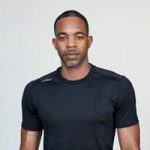
Michael Torres
CEO, Shift Performance, Miami
Michael Torres
CEO, Shift Performance, Miami


Niall O’Driscoll
Academy Directory, SJ.B (St. Joseph’s Bray ) Academy
Niall O’Driscoll
Academy Directory, SJ.B (St. Joseph’s Bray ) Academy

"When COVID altered college athletics as we knew it, Metrifit came to the rescue. This intuitive athlete monitoring, health and well-being system provides the athlete, coach, and sports medicine staff a way to monitor and balance the physical, emotional, health and well-being of our athlete’s. Metrifit provided that calm in the middle of the perfect storm for our entire athletic department for the future. Thank you to the entire Metrifit family for assisting our department with a seamless process."

Jennifer McIntosh
Head Athletic Trainer, Colorado School of Mines
Jennifer McIntosh
Head Athletic Trainer, Colorado School of Mines


Richard Deuchrass
Lincoln University Athletic Performance Manager
Richard Deuchrass
Lincoln University Athletic Performance Manager

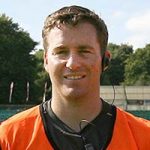
Paul Cremin
Head Physiotherapist, Cornish Pirates Rugby Club
Paul Cremin
Head Physiotherapist, Cornish Pirates Rugby Club


Dan Horan
Head of Fitness for International Football/Fitness Coach Men's Senior Team
Football Association of Ireland
Dan Horan
Head of Fitness for International Football/Fitness Coach Men's Senior Team
Football Association of Ireland


Kevin Schultz
Associate Director of Strength & Conditioning
Director of Olympic Strength & Conditioning
University of Wisconsin
Kevin Schultz
Associate Director of Strength & Conditioning
Director of Olympic Strength & Conditioning
University of Wisconsin


Tino Fusco, B.Sc. ChPC
Head Coach, Women's Soccer, Mount Royal University (Canada)
Tino Fusco, B.Sc. ChPC
Head Coach, Women's Soccer, Mount Royal University (Canada)


Dr. Dale Richardson
CEO Achieve Total Performance Pty Ltd
Dr. Dale Richardson
CEO Achieve Total Performance Pty Ltd


Joe O’Connor
NISUS Fitness, S&C Coach Clare Senior Hurling, Horse Sport Ireland and Limerick Senior Hurling
Joe O’Connor
NISUS Fitness, S&C Coach Clare Senior Hurling, Horse Sport Ireland and Limerick Senior Hurling


Ryan Osborn
Head Basketball Coach, Carmel High School
Ryan Osborn
Head Basketball Coach, Carmel High School


Edgar K. Tham
Founder and Chief Sport & Performance Psychologist, SportPsych Consulting (Singapore, Indonesia, Philippines)
Edgar K. Tham
Founder and Chief Sport & Performance Psychologist, SportPsych Consulting (Singapore, Indonesia, Philippines)


Dan Rickaby
Assistant S&C Coach, Tulane University
Dan Rickaby
Assistant S&C Coach, Tulane University


Emma Hawke, PhD Exercise Physiology
Coach - Sweden Climbing, Olympic Offensive - Female Coach Swedish Olympic Committee, Senior Lecturer - Coach education programme (Sweden)
Emma Hawke, PhD Exercise Physiology
Coach - Sweden Climbing, Olympic Offensive - Female Coach Swedish Olympic Committee, Senior Lecturer - Coach education programme (Sweden)


Graham Williams
Athletic Development Coach, MSc ASCC
Millfield School, UK
Graham Williams
Athletic Development Coach, MSc ASCC
Millfield School, UK


Eamonn Fitzmaurice
Kerry Senior Football, Manager
Eamonn Fitzmaurice
Kerry Senior Football, Manager



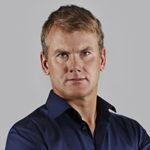
Robert Karlsson, Professional Golfer
Robert Karlsson, Professional Golfer


Erik Helland
Director of Strength & Conditioning and Head Strength Coach Men’s basketball, University of Wisconsin
Erik Helland
Director of Strength & Conditioning and Head Strength Coach Men’s basketball, University of Wisconsin




Kari Thompson
Head Volley Ball Coach, Southern Illinois University
Kari Thompson
Head Volley Ball Coach, Southern Illinois University


Cian O’Neill
Kildare Senior Football Manager
Cian O’Neill
Kildare Senior Football Manager

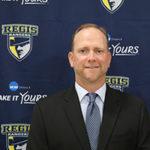
J.B. Belzer
Head Coach, Women's Soccer at Regis University
J.B. Belzer
Head Coach, Women's Soccer at Regis University


Aaron Mansfield
Head Coach, LMU Lions, Loyola Marymount University
Aaron Mansfield
Head Coach, LMU Lions, Loyola Marymount University

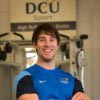
Tommy Mooney
Strength and Conditioning Coach at DCU Sport and with Dublin Minor GAA
Tommy Mooney
Strength and Conditioning Coach at DCU Sport and with Dublin Minor GAA


Dave Passmore
Head Coach, Irish Hockey
Dave Passmore
Head Coach, Irish Hockey


 Next Post
Next Post





